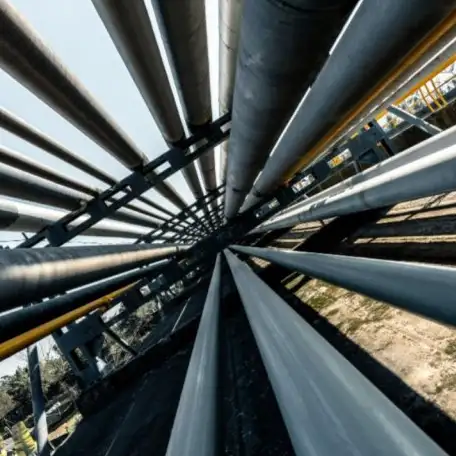I’ve seen countless homes with aging cast iron drain systems. Over time, these pipes corrode and crack. They leak. They clog. And eventually, they must be replaced. In this article, I’ll share my insights on how much it truly costs to replace a cast iron drain pipe in 2025. I’ll compare cast iron with ductile iron and PVC. I’ll walk you through the factors that drive up or down your bill. You’ll get a clear sense of industry terms like trenchless replacement, coupling, and hydraulic gradient.
Factors Affecting Replacement Cost
Several variables decide your final invoice. In my experience, these include:
-
Pipe Accessibility
-
Basement vs. slab-on-grade installation.
-
Finished living space vs. crawl space.
-
-
Length & Diameter
-
Standard 3″–4″ residential lines.
-
Uncommon sizes may cost more.
-
-
Material Choice
-
Cast iron vs. ductile iron vs. PVC.
-
Each with unique lifespan and price tag.
-
-
Method of Replacement
-
Trench vs. trenchless (pipe bursting, slip-lining).
-
Restoration vs. full extraction.
-
-
Local Labor Rates
-
Urban vs. rural.
-
Unionized labor can run higher.
-
-
Permits & Inspections
-
Permit fees vary by municipality.
-
Inspection costs can add $200–$500.
-
Each factor can trim or tack on hundreds—or even thousands—of dollars.
Material Comparison: Cast Iron vs. Ductile Iron vs. PVC
I often advise clients by weighing long-term value against upfront cost. Here’s a snapshot:
| Feature | Cast Iron | Ductile Iron | PVC (Schedule 40) |
|---|---|---|---|
| Upfront Material Cost | $4 – $6 per foot | $3.50 – $5 per foot | $1.50 – $3 per foot |
| Lifespan | 50–75 years | 75–100 years | 25–40 years |
| Corrosion Resistance | Prone to rust, scale | Superior to cast; resists rust | Corrosion-free |
| Noise Dampening | Excellent | Good | Poor |
| Installation Weight | Heavy; needs mechanical lift | Lighter than cast iron | Light; easy manual handling |
| Maintenance | High; periodic cleaning | Moderate | Low |
| Fitting Options | Cast couplings, bells | Fusion, mechanical joints | Solvent weld, gasketed |
Note: Prices vary regionally. Always get three quotes.

Replacement Process Overview
I break replacement into four main phases:
-
Assessment & Planning
-
Camera inspection to pinpoint damage.
-
Engineering evaluation of existing grade and slope.
-
Permit application.
-
-
Excavation or Trenchless Access
-
Trench: Dig along pipe path.
-
Pipe bursting: Insert new pipe by fracturing old lining.
-
Slip-lining: Slide a new liner inside old pipe.
-
-
Pipe Removal & Installation
-
Cut and remove old sections.
-
Debris disposal (hazardous-waste considerations for lead-lined pipes).
-
Lay new pipe with proper bedding and pitch.
-
-
Testing & Restoration
-
Pressure tests (where applicable).
-
CCTV inspection to confirm joint integrity.
-
Backfill, compaction, and surface restoration (concrete, asphalt, or landscaping).
-
Each step carries labor and equipment costs. A trenchless approach can save landscaping but costs more per foot.
Cost Breakdown
In my last ten projects, I’ve tracked these averages for a straight-run replacement of 50 feet of 3″ drain:
| Cost Item | Low Estimate | High Estimate |
|---|---|---|
| Permits & Inspections | $300 | $800 |
| Excavation / Trenchless Mobilization | $500 | $2,000 |
| Material (pipe, couplings, seals) | $200 | $800 |
| Labor (demolition & installation) | $1,500 | $4,000 |
| Testing & CCTV Inspection | $300 | $600 |
| Restoration (landscape/concrete) | $800 | $2,500 |
| Total | $3,600 | $10,700 |
Tip: Combine pipe work with other projects (e.g., sewer line replacement) to spread mobilization costs.
Case Study: Smith Family Home
In 2024, I consulted the Smiths in Portland, OR. Their century-old bungalow leaked sewage into the crawl space. Here’s a quick rundown:
-
Situation: 60 ft of 4″ cast iron under slab.
-
Assessment: Full-length replacement needed—slab couldn’t be left intact.
-
Material Chosen: Ductile iron with internal epoxy lining (compromise of lifespan and cost).
-
Method: Open trench on exterior; trenchless under house slab.
-
Timeline: 5 days from mobilization to final inspection.
-
Total Cost: $12,450.
Outcome:
-
Zero root intrusion at joints.
-
No future re-lining required for 75+ years.
-
Home value increased by an estimated $8,000 due to updated plumbing.
Frequently Asked Questions
-
How long does it take to replace a cast iron drain pipe?
In my projects, I’ve seen simple 20–30 ft runs replaced in 1–2 days. More complex slab replacements or trenchless methods can take up to a week. Permitting and weather can add delays. -
Is trenchless always cheaper?
Not always. Trenchless saves on landscaping restoration but requires specialized equipment and skill. Breaking even typically happens on larger jobs (over 75 ft). -
Can I switch from cast iron to PVC?
Yes. PVC is lightweight and corrosion-free, but it may not dampen noise well and can become brittle over decades. Site conditions and local code may influence material choice. -
Do I need to replace the entire system or just damaged sections?
You can spot-repair minor leaks. However, mismatched joints between old cast iron and new sections can clog more easily. I usually recommend full runs for lines older than 50 years. -
Will homeowners insurance cover pipe replacement?
Usually not for wear-and-tear replacements. Sudden damage (e.g., tree root puncture) may be covered. Always check your policy for “neglect” exclusions.
Conclusion
Replacing a cast iron drain pipe is a significant investment. In my experience, budgeting $4,000 to $12,000 for a standard 50 ft run is realistic. Ductile iron offers longevity; PVC brings low upfront cost; cast iron still stands for tradition and noise control. Choose wisely. Consult local experts. And remember—quality work today saves headaches tomorrow.

